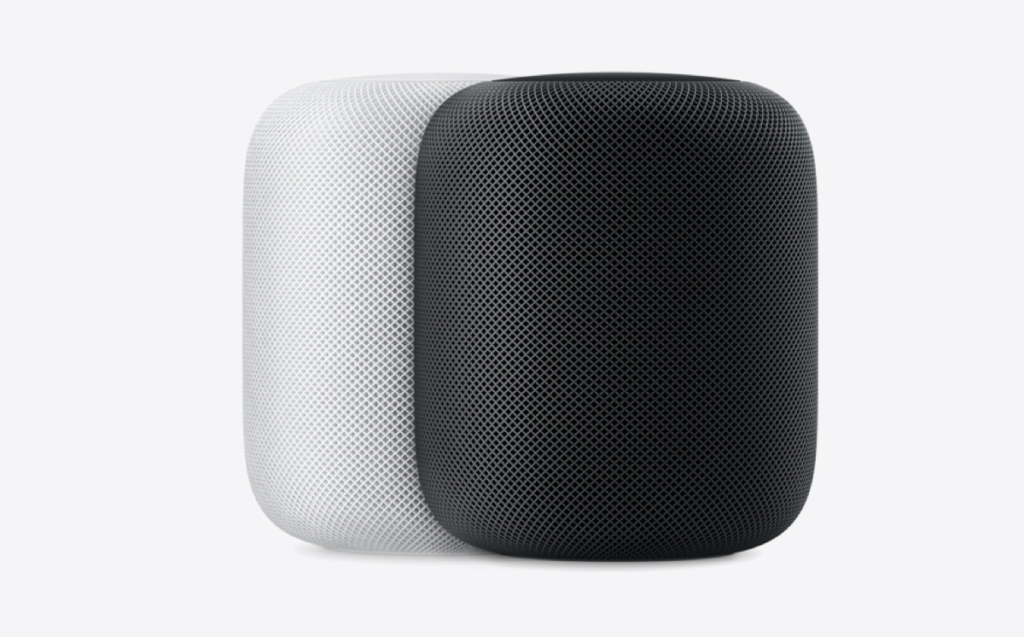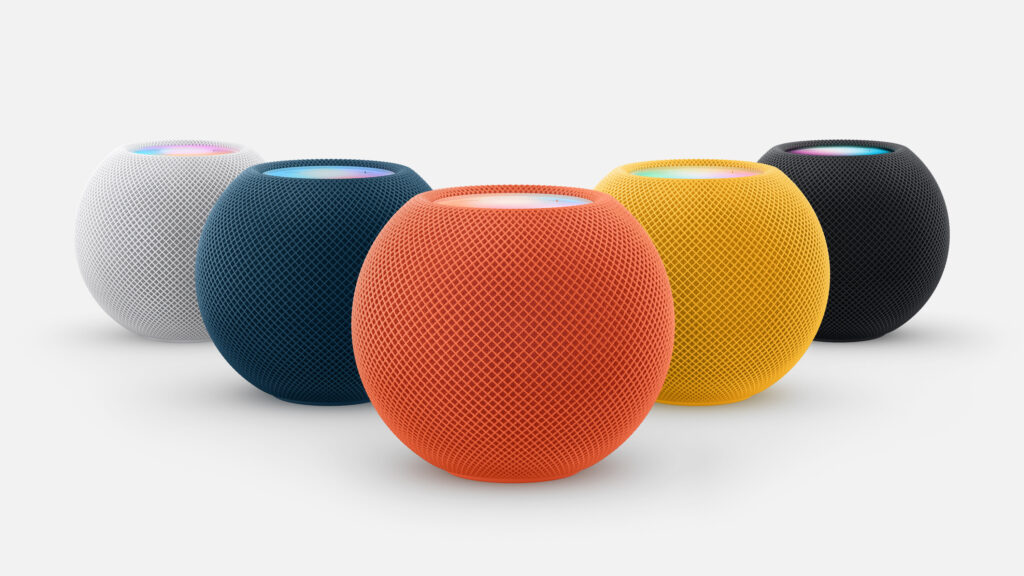HomePod is a smart speaker that is available on the market since 2018 and until now has been released in two versions; original and mini.
The HomePod is a rounded, cylindrical-shaped speaker with a small touch screen on the top. Inside each HomePod has been fitted set of tweeters, woofers, microphones, and all electronics.
To use HomePod users need to use Apple devices such as iPhone, iPad, Mac, or Apple Wach, or use their own voice.
Siri can be used to control the speaker and other HomeKit devices and can be used to conduct text messaging and voice calls from an iPhone. The HomePod mainly supports Apple’s own platforms and technologies, including Apple Music, iTunes Store purchases and Match, iTunes podcasts, Beats 1 radio, and AirPlay (with limited third-party support for internet radio services iHeartRadio, Radio.com, and TuneIn coming in the fall of 2019), while an iOS 11 device is required for initial setup.
HomePod can serve as a soundbar within a home entertainment system when selected through an Apple TV. The HomePod does not officially support audio-in from Bluetooth sources.
AirPlay 2 and multi-room, multi-speaker support were announced in February 2018 and released in September 2018 in iOS 12 along with additional features such as multiple named timers, Find My iPhone, Siri shortcuts, the ability to make, receive, and screen phone calls directly on the HomePod, and the ability to search for songs using the lyrics.
All models of the Apple HomePod Series
Original HomePod
The first HomePod has been introduced on January 26, 2018, and discontinued three years and three months later on March 12, 2021. Today this device is 6 years old.
This HomePod features an Apple A8 processor, 1 GB of RAM, 16 GB of flash memory, Touch Screen, Siri, AirPlay 2 support, Bluetooth 5.0, Wi-Fi 802.11ac, six microphones, and eight speakers and is sold in two colors: White and Space Gray.
The HomePod has a rounded, cylindrical shape, and has a small touchscreen on its top. It has seven tweeters in its base and a four-inch woofer (Apple does not specify Hz frequency range) towards the top, as well as six microphones used for voice control and acoustic optimization. The system-on-a-chip is the Apple A8, which Apple previously included in the Apple TV HD, iPod touch 6th generation, iPad mini 4, and iPhone 6 or 6 Plus.
The original price of the HomePod was $349
Go to the full specifications of the HomePod
HomePod mini
The HomePod mini has been introduced on October 13, 2020, and is still available in Apple Store. Today this device is 3 years old.
HomePod mini features an Apple S5 processor, Apple U1 chip for device proximity, Touch Screen, Siri, AirPlay 2 support, Bluetooth 5.0, Wi-Fi 802.11n, four microphones, and three speakers, and is sold in two colors: White and Space Gray.
Apple also announced new software for HomePod and HomePod mini that: improves Continuity and Handoff integration; enables Siri to recognize up to six people’s voices and personalized responses to each one; and adds the Intercom feature – also available on iPhones, iPads, and Apple Watches – enabling users with more than one HomePod to communicate with each other in different rooms. HomePod mini supports the Thread network protocol, supported by the Connected Home over IP working group.
HomePod mini has a full-range driver and dual passive radiators, a custom acoustic waveguide for a 360º sound field, and computational audio for real-time tuning. It has four microphones to listen to Siri commands. Its wireless capabilities include 802.11n Wi-Fi, Bluetooth 5, and an Ultra-wideband chip for device proximity.
The original price of the HomePod mini was $99
Go to the full specifications of the HomePod mini
Article last updated: May 28, 2022
Article next update: March 2023

